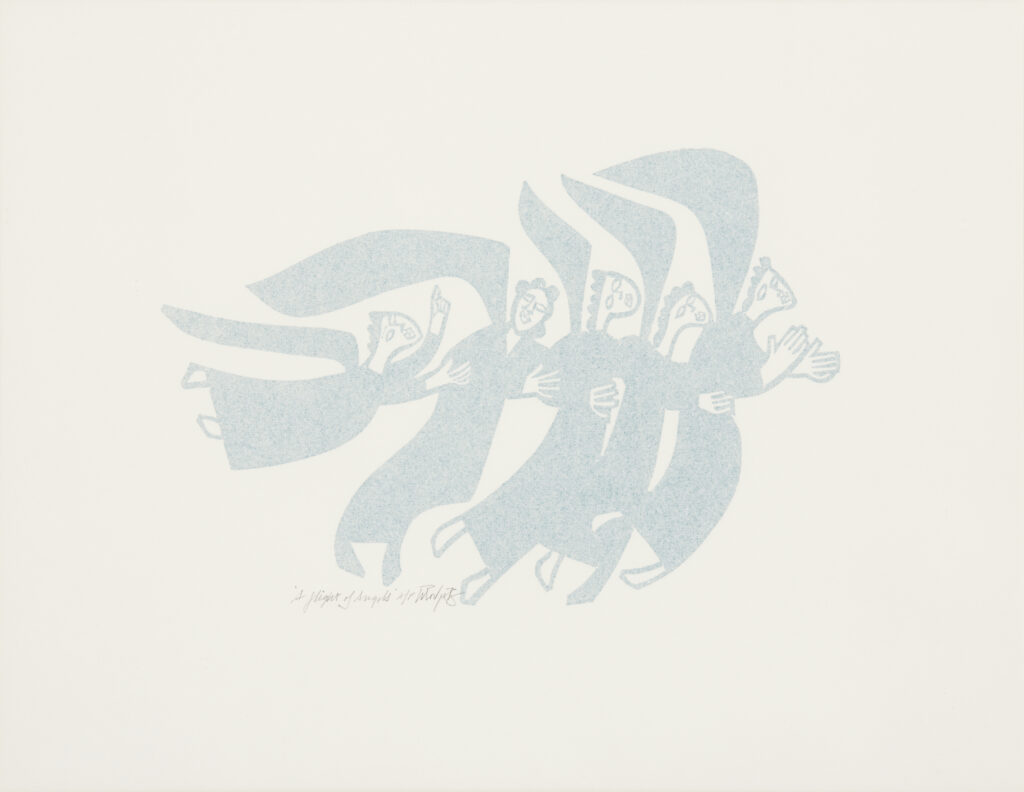

Unfurling, is the second exhibition curated by Hannah Draper, following a period of research and development in Spring / Summer 2022 as part of our Early Career Curator Programme.
Unfurling features a total of six artworks from our collection:
Alfons Bytautas, Summer Garden, 2003
Andy Goldsworthy, Sweet Chestnut Leaf Hole, 1995
Andy Goldsworthy, Sweet Chestnut Leaf Hole, 1995
Jila Peacock, Grace, 1997
Wendy Halstead, Corn on the Corb, 1988
Willie Rodger, Flight of Angels, 1996
This selection of works explores ideas around communication, unfurling, revealing/hiddenness, and the passage of time. I am interested in how my process of embodied viewing might encourage this for other viewers, and how sensory prompts may give a way in to this form of experiencing or relating to artworks. I also think poetic exploration and description of works may give people who don’t tend to relate as easily to visual works, or who are visually impaired, gives another way of accessing and responding to a visual artwork.
The sensory prompts consider how we might view art from the body, not just the eyes or head, and how this awareness of one’s own body and environment could foster a sense of calm in what might be an unfamiliar location or situation. Using this idea of embodied viewing, the display of these works on different levels might encourage the viewer to look or move around the space. This physical involvement may also help provide a tangible distraction and give the option for a more active engagement with the works. Having works at lower levels also means the exhibition is accessible for children and for those in wheelchairs.
The mix of land art and natural forms alongside the human body explores how we communicate through, with and alongside other-than-human life.While Andy Goldsworthy’s Sweet Chestnut LeafHole shows his intentional physical interruption in the landscape, Jila Peacock’s GRACE similarly uses physical gesture to communicate.Through these gestures might we begin to build a fuller communication and find familiarities in our relationships with one another and with nature?
Time is present in different ways in these works; through the capturing of the seasons, perishable vegetation, and fleeting movements of the body.There is an impermanence to both the summer garden, and the angels about to fly out of the frame and out of view. Peacock makes the ephemeral gesture of language into a permanent mark held in time, similar to the way Goldsworthy’s circle is only visible when captured close up. The works ask us to lean in a little closer, to listen and look more closely at what is being revealed, or hidden, from us and to take our time in this process or experience.
How might these different interactions between land and body help us understand communication better, slow down, and be in our bodies? In a time of unfurling and reconnection after a prolonged period of isolation during the pandemic, and a fractured sense of time, I have been drawn towards works that invite us to look closer at details, symbols and language. From a position of embodied viewing, I am interested in how visual art can provoke curiosity in novel imagery or ideas, while re-connecting and grounding viewers in their environment.
Please click the artworks below to explore the exhibition further.
The Early Career Curator Programme was supported by Museum and Galleries Scotland.
31 May 2023 by
Amy Miles